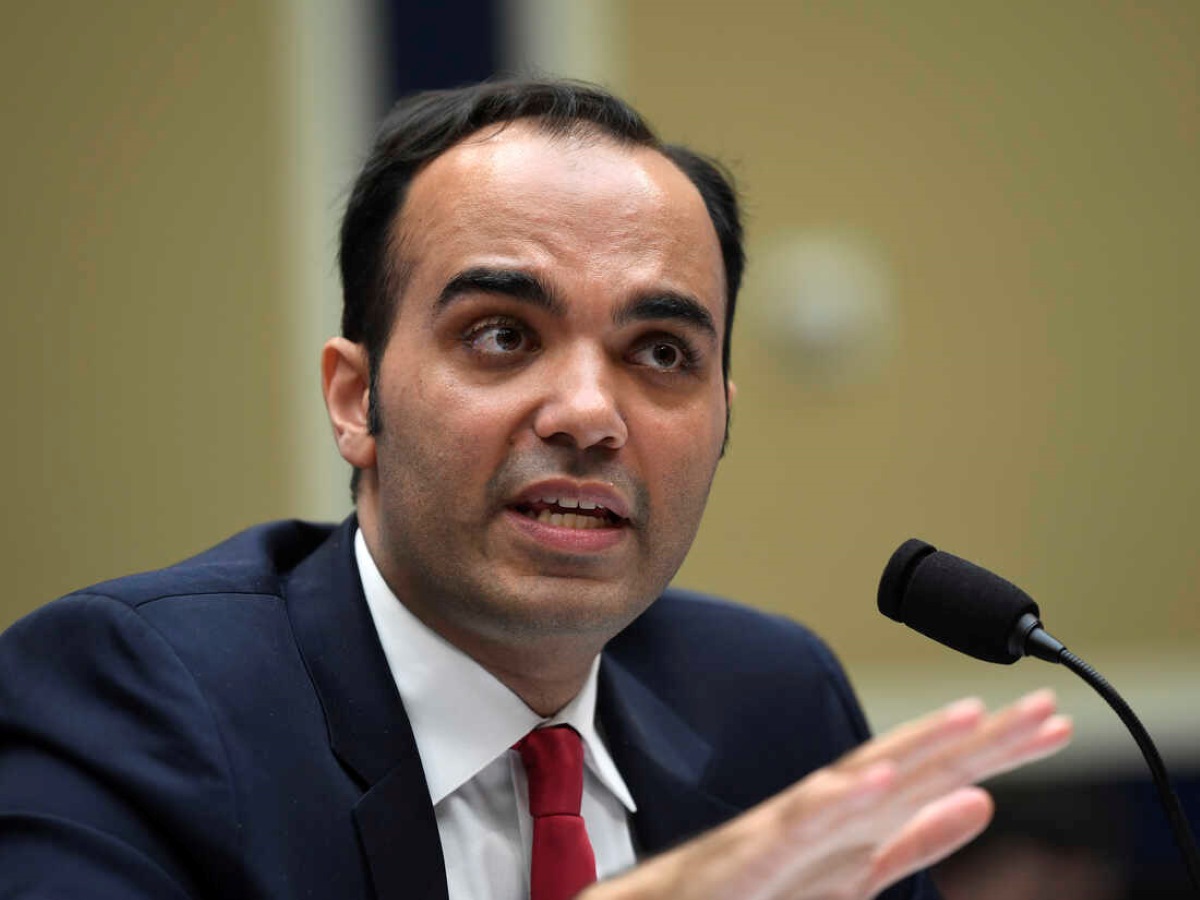Home>Finance>Who Receives Financial Protection From Life Insurance


Finance
Who Receives Financial Protection From Life Insurance
Modified: December 30, 2023
Discover how life insurance provides financial protection for individuals in need of financial security. Learn how life insurance can help you achieve your finance goals.
(Many of the links in this article redirect to a specific reviewed product. Your purchase of these products through affiliate links helps to generate commission for LiveWell, at no extra cost. Learn more)
Table of Contents
- Introduction
- Understanding Financial Protection
- Life Insurance: An Overview
- Factors Affecting Life Insurance Coverage
- Who Receives Financial Protection?
- Demographic Analysis: Determining the Beneficiaries
- Income Levels and Life Insurance Coverage
- Occupation and Life Insurance Coverage
- Gender Disparities in Life Insurance Protection
- Marital Status and Life Insurance
- Understanding the Role of Health and Life Insurance
- Conclusion
Introduction
Financial protection is a crucial aspect of our lives, providing us with a safety net during times of uncertainty. One of the key tools for achieving this protection is life insurance. Life insurance offers individuals the opportunity to secure the financial well-being of their loved ones in the event of their passing. It provides a lump sum payment to the designated beneficiaries, helping them cover various expenses, such as funeral costs, outstanding debts, and everyday living expenses.
In this article, we will explore the concept of financial protection and delve into the world of life insurance. We will examine the factors that influence the coverage provided by life insurance policies and discuss who receives financial protection from these policies. By gaining a deeper understanding of these dynamics, we can make informed decisions when it comes to our own financial and insurance planning.
Understanding the importance of financial protection and the role that life insurance plays in providing it is essential. Life is unpredictable, and having adequate coverage ensures that our loved ones can continue to maintain their quality of life even in our absence. Whether it’s supporting our family in meeting their financial obligations or safeguarding the future of our business partners, life insurance offers us peace of mind.
Throughout this article, we will explore the various factors that affect life insurance coverage, such as income levels, occupation, gender, and marital status. By examining these factors, we can gain insights into who is most likely to have life insurance coverage and the reasons behind these disparities. Additionally, we will emphasize the importance of health and its relationship with life insurance coverage.
By the end of this article, you will have a comprehensive understanding of who receives financial protection from life insurance and the underlying factors that contribute to these outcomes. It is important to note that this information serves as a guide and should be supplemented with personalized expert advice to make informed decisions related to your own insurance needs.
Understanding Financial Protection
Financial protection refers to the measures individuals take to safeguard themselves and their loved ones from the adverse financial consequences of unexpected events, such as disability, illness, or death. It involves having a plan in place to ensure that financial resources are available to cover expenses and maintain a certain standard of living during times of crisis.
Having financial protection is vital because life is uncertain, and unforeseen circumstances can have a significant impact on our financial well-being. Without proper protection, these events can lead to financial hardships, creating stress and uncertainty for ourselves and our families. Financial protection provides a sense of security, allowing individuals to face life’s challenges with greater confidence.
Life insurance is one of the key pillars of financial protection. It serves as a safety net to protect our loved ones financially in the unfortunate event of our death. By paying regular premiums, we secure a life insurance policy that provides a lump sum payment, known as the death benefit, to our designated beneficiaries upon our passing. This money can be used to cover various expenses, including funeral costs, outstanding debts, mortgage payments, education expenses, and daily living expenses.
However, financial protection extends beyond life insurance. It also involves having adequate health insurance coverage to handle medical expenses, disability insurance to provide income replacement in the event of a disability, and emergency funds to handle unexpected expenses or job loss. By having a comprehensive approach to financial protection, individuals can mitigate the risks associated with unforeseen events and ensure the continuity of their financial well-being.
Furthermore, financial protection is not just for individuals; it also applies to businesses. Business owners need to have appropriate insurance coverage to protect their assets, compensate their employees, and ensure the continuity of their operations in the face of potential risks and unforeseen events. This includes insurances such as property insurance, liability insurance, and business interruption insurance.
Overall, understanding the importance of financial protection and the role that various insurance policies play in providing it is crucial for individuals and businesses alike. By taking proactive steps to secure financial protection, we can safeguard our loved ones, maintain our standard of living, and navigate through life’s uncertainties with greater peace of mind.
Life Insurance: An Overview
Life insurance is a contract between an individual and an insurance company. Under this agreement, the individual pays regular premiums to the insurance company, and in return, the insurance company provides a death benefit to the designated beneficiaries upon the insured person’s death. Life insurance is a critical component of financial planning as it provides a means of financial protection for our loved ones when we are no longer able to provide for them.
There are several types of life insurance policies available, each with its own features and benefits. The two main categories of life insurance are term life insurance and permanent life insurance.
Term life insurance offers coverage for a specified term, such as 10, 20, or 30 years. If the insured person passes away during the term of the policy, the beneficiaries receive the death benefit. Term insurance is generally more affordable compared to permanent insurance because it provides coverage for a specific period and does not have a savings component. It is often chosen to cover temporary financial obligations, such as a mortgage or debt, or to provide income replacement during the working years.
Permanent life insurance, on the other hand, provides coverage for the entire lifetime of the insured person as long as the premiums are paid. It includes a savings or investment component, which allows the policy to accumulate cash value over time. There are different types of permanent life insurance, such as whole life insurance, universal life insurance, and variable life insurance. These policies offer lifelong coverage and can serve as a tool for wealth accumulation and estate planning.
Life insurance premiums are determined based on various factors, including the insured person’s age, health condition, lifestyle choices, and the coverage amount. Typically, younger individuals in good health and with fewer risky behaviors, such as smoking or extreme sports, can secure life insurance coverage at lower premiums. However, it is important to note that obtaining life insurance is still possible for individuals with pre-existing medical conditions or higher-risk lifestyles, albeit at higher premium rates.
Life insurance offers financial protection to the beneficiaries named in the policy. These beneficiaries can be family members, such as spouses, children, or other dependents. It can also include business partners or charity organizations. The death benefit provided by the life insurance policy can be used to meet various financial needs, such as paying off debts, covering funeral expenses, maintaining the family’s standard of living, or providing for educational expenses.
Understanding the different types of life insurance policies, their benefits, and the process of obtaining coverage is essential for making informed decisions. Life insurance provides a valuable safety net for our loved ones and ensures that they are financially protected when we are no longer around to provide for them. It is a crucial component of a comprehensive financial plan and offers peace of mind during uncertain times.
Factors Affecting Life Insurance Coverage
Several factors play a significant role in determining the coverage individuals can obtain from life insurance policies. Insurance companies assess these factors to evaluate the level of risk associated with insuring an individual and determine the premiums and coverage amount accordingly. Understanding these factors is crucial for individuals seeking to secure adequate life insurance coverage.
Age: Age is one of the primary factors considered by insurance companies. Generally, younger individuals tend to have lower mortality rates and are considered lower risk. Therefore, it is often easier and more affordable for younger individuals to secure life insurance coverage compared to older individuals.
Health Condition: The health condition of an individual plays a crucial role in determining life insurance coverage. Insurance companies typically require applicants to undergo a medical examination to assess their overall health and identify any pre-existing conditions. Individuals in good health and without serious medical issues are more likely to secure better coverage at lower premiums.
Lifestyle Choices: Lifestyle choices, such as smoking, excessive alcohol consumption, or participation in high-risk activities like skydiving or extreme sports, can impact life insurance coverage. These choices increase the risk of premature death, which may result in higher premium rates or limited coverage options.
Occupation: Certain occupations are considered riskier than others, and insurance companies take this into account when determining coverage. Jobs that involve high physical risk or exposure to hazardous environments, such as firefighters or deep-sea divers, may have higher premium rates or limited coverage options.
Hobbies and Activities: Engaging in high-risk hobbies or activities, such as mountain climbing or piloting an aircraft, can impact life insurance coverage. These activities increase the chances of accidents or untimely death, which may result in higher premiums or exclusions in coverage.
Family Medical History: The medical history of an individual’s family, specifically any hereditary diseases or conditions, may be considered by insurance companies. Certain medical conditions can increase the risk of premature death and may affect the coverage options or premiums.
Gender: Statistics show that women generally have a longer life expectancy compared to men. This means that women may have more favorable premium rates and coverage options when it comes to life insurance.
Smoking Habits: Smoking is a significant risk factor for various health conditions and premature death. Smokers usually face higher premium rates compared to non-smokers or may be required to undergo a longer waiting period before obtaining coverage.
Amount of Coverage: The desired amount of life insurance coverage also affects the premium rates. Higher coverage amounts typically result in higher premiums, as the insurance company assumes a higher level of risk in providing a larger payout in the event of the insured person’s death.
It’s important to note that while these factors are considered by insurance companies, they don’t always disqualify individuals from obtaining coverage. Insurance providers offer options for individuals with different risk profiles, and it’s crucial to research and compare policies to find the most suitable coverage based on personal circumstances.
By understanding the factors that affect life insurance coverage, individuals can assess their own risk profile and take steps to improve their chances of securing favorable coverage at affordable rates. This may involve adopting a healthier lifestyle, quitting smoking, or choosing lower-risk hobbies. Consulting with a licensed insurance advisor can provide further guidance on finding the most suitable life insurance coverage.
Who Receives Financial Protection?
Life insurance policies are designed to provide a safety net and financial protection to the designated beneficiaries of the policyholder. These beneficiaries are the individuals or entities who will receive the death benefit in the event of the insured person’s passing. The beneficiaries can vary based on the personal circumstances and preferences of the policyholder.
Family members are often the primary beneficiaries of life insurance policies. Spouses, children, and other dependents rely on the income and support provided by the policyholder. The death benefit from a life insurance policy can help maintain their standard of living, cover education expenses, or pay off outstanding debts, such as a mortgage. This financial protection ensures that the policyholder’s family can continue their lives and meet their financial obligations even in their absence.
In addition to the immediate family, life insurance policies can also designate other individuals or entities as beneficiaries. This may include extended family members, such as parents or siblings, who might rely on the policyholder for financial support. Business partners or key employees can also be named as beneficiaries to ensure the smooth continuation of business operations in the event of the policyholder’s death.
Charity organizations or non-profit entities can also be named as beneficiaries of a life insurance policy. This allows policyholders to leave a lasting legacy by supporting causes they are passionate about and making a positive impact even after they’re gone.
It’s important to regularly review and update the beneficiaries listed on a life insurance policy. Life circumstances can change, such as getting married, having children, or starting a new business. Ensuring that the beneficiaries are current and accurately reflect the policyholder’s wishes is crucial. Failure to update beneficiaries could result in unintended consequences or disputes over the distribution of the death benefit.
It’s worth noting that in cases where the policyholder does not have any specific beneficiaries listed or if the listed beneficiaries have predeceased the policyholder, the death benefit may go to the policyholder’s estate. In such cases, the distribution of the death benefit would be determined through the policyholder’s will or through the laws of intestacy if no will exists.
Life insurance provides financial protection to those who depend on the insured person’s income and support. Naming the appropriate beneficiaries ensures that the death benefit is allocated according to the policyholder’s wishes and provides the intended financial protection to those who need it the most.
Demographic Analysis: Determining the Beneficiaries
Demographics play a significant role in determining who receives financial protection through life insurance policies. Analyzing various demographic factors helps insurance companies assess risk, determine premiums, and shape coverage options. Understanding these demographics can provide insights into the beneficiaries who are more likely to receive financial protection through life insurance.
Age: Age is a crucial demographic factor that impacts the selection of beneficiaries. Younger individuals tend to have family members, such as spouses and children, who are financially dependent on them. Therefore, they are more likely to designate immediate family members as beneficiaries. As individuals age, their beneficiaries may shift to include other family members or institutions like charities or non-profit organizations.
Marital Status: Married individuals typically designate their spouses as primary beneficiaries since they rely heavily on each other’s income and support. For unmarried individuals, beneficiaries may include immediate family members, such as parents or siblings, or organizations of personal importance, such as charitable institutions or educational foundations.
Parental Status: Parents have the responsibility of providing for their children’s well-being. Therefore, they often prioritize their children’s financial security by designating them as beneficiaries. This ensures that the death benefit from life insurance can cover their children’s education, daily living expenses, and medical needs in the unfortunate event of their passing.
Income and Economic Status: Individuals with higher incomes often have higher coverage amounts to ensure their family’s financial stability in the event of their death. They may also have more flexibility in choosing beneficiaries since they can provide for a wider range of family members or support charitable causes.
Relationship Status: Different relationship dynamics can influence the choice of beneficiaries. For example, individuals in long-term committed relationships may designate their partners as beneficiaries, even if they are not legally married. In contrast, divorced individuals may update their beneficiaries to align with their changed family circumstances.
Legal Obligations: Legal obligations, such as child support payments or outstanding debts, can impact the choice of beneficiaries. Individuals may designate specific beneficiaries to ensure that these financial obligations are appropriately managed after their passing.
Cultural and Religious Beliefs: Cultural and religious beliefs can also influence the choice of beneficiaries. For example, in some cultures or religions, it may be customary to allocate a portion of the death benefit to specific family members or religious institutions as a form of charitable giving.
Overall, the selection of beneficiaries is a highly personal decision influenced by a combination of demographic factors, family dynamics, and personal preferences. Insurance companies account for these factors when assessing risk and determining coverage options. It is important for individuals to carefully consider their unique circumstances and consult with their financial advisors or insurance professionals to ensure that the chosen beneficiaries align with their wishes and provide the intended financial protection.
Income Levels and Life Insurance Coverage
Income levels play a crucial role in determining the amount of life insurance coverage individuals can obtain. The level of income is a significant factor that insurance companies consider when assessing the risk profile of applicants. Understanding the relationship between income levels and life insurance coverage can help individuals make informed decisions when it comes to their financial protection.
Individuals with higher income levels tend to have greater financial responsibilities and obligations. They may have larger mortgages, higher levels of debt, and a greater need to replace their income in the event of their passing. As a result, they often require higher coverage amounts to ensure their loved ones are adequately protected and can maintain their standard of living.
Insurance companies typically use a multiplier approach to determine the coverage amount needed based on income. This multiplier can vary but is often in the range of 5 to 10 times the individual’s annual income. For example, if an individual earns $100,000 per year and chooses a multiplier of 7, they would seek a life insurance policy with a coverage amount of $700,000.
On the other hand, individuals with lower income levels may require less coverage, especially if they have fewer financial responsibilities or are able to rely on other sources of support. These individuals may choose a policy that covers specific needs, such as outstanding debts or funeral expenses, rather than seeking a high coverage amount.
It is important to note that affordable coverage is still accessible to individuals with lower income levels. Term life insurance, which provides coverage for a specific period, is typically more affordable compared to permanent life insurance policies. This allows individuals to obtain the necessary coverage within their budget and tailor it to their specific financial needs.
Additionally, it’s essential to consider the impact that life insurance premiums may have on an individual’s budget, especially for those with lower income levels. It’s crucial to strike a balance between obtaining sufficient coverage and ensuring that the premiums are affordable and manageable in the long term.
Furthermore, income levels can also influence the ability to qualify for certain types of life insurance policies, specifically permanent life insurance. Permanent policies typically have higher premium rates, and individuals with lower incomes may find it more challenging to pay these premiums consistently. In such cases, individuals may opt for term life insurance policies that offer coverage during their working years when income is the primary concern.
In summary, income levels play a significant role in determining the amount of life insurance coverage individuals can obtain. Higher income levels often require greater coverage amounts to protect against financial liabilities and replace lost income. However, affordable options are available for individuals with lower income levels, allowing them to secure the necessary coverage within their financial means. It is important to carefully assess individual financial situations and consult with insurance professionals to ensure that the chosen coverage aligns with income levels and provides adequate financial protection.
Occupation and Life Insurance Coverage
Occupation is a significant factor that insurance companies consider when assessing risk and determining life insurance coverage. Different occupations present varying levels of risk and potential hazards, which can impact the premiums individuals pay and the coverage options available to them. Understanding the relationship between occupation and life insurance coverage is essential for individuals seeking to protect themselves and their loved ones.
Some occupations are considered low-risk, such as office-based professionals like accountants or administrators. These individuals typically have a lower likelihood of facing occupational hazards or life-threatening situations in their work environment. As a result, they may have more options and access to affordable life insurance coverage. Insurance companies perceive lower risk in insuring individuals in these occupations and, therefore, may offer more favorable premium rates and coverage options.
On the other hand, there are occupations that are inherently high-risk, such as firefighters, police officers, or construction workers. Individuals working in these fields face potential dangers on a daily basis, and insurance companies may view them as higher risk. As a result, they may face higher premium rates or limitations on coverage options. Insurance providers still offer coverage to individuals in high-risk occupations, but the premiums may be adjusted to reflect the increased risk associated with their work.
In addition to the level of risk, occupation can also influence the coverage amount individuals can obtain. Individuals with higher-risk occupations may find it more challenging to secure coverage amounts that align with their financial responsibilities and income levels. This is because insurance companies consider the potential financial impact of the insured’s death on dependents and may adjust coverage amounts accordingly. However, it’s important to note that insurers still aim to offer coverage options to individuals in high-risk occupations to ensure they have the necessary financial protection.
Furthermore, some occupations may require individuals to have additional coverage or specialized policies. For instance, pilots or individuals working in the maritime industry may require specific coverage for accidents or incidents related to their profession. These additional coverage options may have different underwriting guidelines and premium rates due to the unique risks associated with these occupations.
When applying for life insurance, individuals are typically required to disclose their occupation and provide details about their work environment. It’s crucial to provide accurate information as misrepresentation or omission of occupation-related risks can result in denied claims or policy cancellations in the future.
Overall, occupation is an important factor in determining life insurance coverage. Occupations with lower risk typically have more affordable coverage options, while high-risk occupations may have higher premiums or limited coverage choices. Regardless of the occupation, it is essential for individuals to seek appropriate coverage that aligns with their financial responsibilities and provides the necessary financial protection for their loved ones.
Gender Disparities in Life Insurance Protection
Gender disparities can be observed in various aspects of society, including the realm of life insurance. Historically, there have been differences in life insurance coverage between men and women, driven by factors such as life expectancy, occupation, and income disparities. Understanding these disparities is crucial for addressing potential inequalities and ensuring fair access to life insurance protection for all individuals.
One of the primary factors contributing to gender disparities in life insurance is the difference in life expectancy between men and women. On average, women tend to have longer life expectancies compared to men. Insurance underwriters consider this difference in life expectancy as they assess risk and calculate premiums. As a result, women may be offered more favorable premium rates due to their longer projected lifespan.
However, it’s important to note that the gender disparity in life expectancy is gradually narrowing, and some insurance companies are adjusting their underwriting practices to reflect this change. Increasingly, insurers are using gender-neutral pricing models or considering other factors beyond gender alone to determine premiums.
Occupation can also contribute to gender disparities in life insurance protection. Certain occupations traditionally dominated by one gender may have varying levels of risk associated with them. For example, certain physically demanding or high-risk occupations may be male-dominated, resulting in higher premiums due to the perceived higher risk. On the other hand, women may face higher premiums in occupations with a higher likelihood of certain health issues, such as breast cancer, which can result in an increase in life insurance premiums.
Income disparities between genders can also impact life insurance coverage. Women, on average, tend to earn less than men, which can influence the coverage amounts they can afford or obtain. Lower income levels may result in individuals purchasing life insurance with smaller coverage amounts, potentially leaving them underinsured compared to their male counterparts with higher incomes.
Another aspect to consider is that many women take on significant caregiving roles within their families. While not directly related to gender, these caregiving responsibilities can impact a woman’s ability to work and earn an income. This may affect their prospects of obtaining life insurance coverage or the coverage amounts needed to protect their loved ones financially.
To address these gender disparities, there is an ongoing effort to promote gender equality in various aspects of society, including the insurance industry. Some insurance companies have adopted gender-neutral pricing and underwriting practices, ensuring that premiums are based on individual risk assessment rather than gender alone. Additionally, policies and regulations aimed at reducing income disparities and providing equal opportunities for men and women in the workplace can help mitigate gender disparities in life insurance protection.
Overall, while gender disparities have historically existed in life insurance protection, the industry is evolving to address these inequalities. It is important for individuals, regardless of gender, to explore their options, compare coverage, and work closely with insurance professionals to secure the right amount of coverage that aligns with their individual needs and circumstances.
Marital Status and Life Insurance
Marital status is an important factor that can influence the need for and availability of life insurance coverage. Life insurance provides financial protection to dependents in the event of the insured person’s passing, and marital status can impact the beneficiaries and the coverage amount needed.
For married couples, life insurance can be crucial in providing financial security for the surviving spouse and any dependents. In the event of the policyholder’s death, the death benefit can be used to cover funeral expenses, pay off outstanding debts, and replace the lost income of the deceased spouse. It can also help maintain the family’s standard of living and provide for the education and future needs of any children the couple may have.
When both partners are contributing to the household income, it is important to assess the financial impact of either spouse’s passing. In such cases, both partners may consider having separate life insurance policies to ensure adequate coverage for each other and their dependents.
For individuals who are unmarried or in non-marital partnerships, the need for life insurance may differ. It is still essential to consider financial responsibilities and dependents when determining the need for coverage. Unmarried individuals may have other individuals who rely on their financial support, such as aging parents, siblings, or children from previous relationships. In these cases, life insurance can provide financial protection for these dependents in the event of the insured person’s death.
Some unmarried individuals may choose to designate their partner or significant other as the beneficiary of their life insurance policy. However, it is important to note that legal recognition of non-marital partnerships or relationships may vary based on jurisdiction. Therefore, it’s crucial to consult with legal professionals and ensure that the appropriate legal documentation is in place to protect the partner’s rights as a beneficiary.
It’s worth mentioning that life insurance coverage for divorced individuals may require adjustments to reflect their changed circumstances. Updating beneficiaries, coverage amounts, or overall coverage needs may be necessary to align with the new financial responsibilities and family dynamics post-divorce.
Ultimately, the decision to obtain life insurance and the amount of coverage needed should consider individual circumstances, financial responsibilities, and the wishes of the insured person. Consulting with insurance professionals or financial advisors can help individuals assess their needs and determine the most suitable coverage options based on their marital status and unique circumstances.
It is also important to regularly review and update life insurance policies as marital status may change over time due to new relationships, marriage, divorce, or the loss of a spouse. Ensuring that policies accurately reflect current marital status and beneficiaries helps provide the intended financial protection for those who depend on it.
Understanding the Role of Health and Life Insurance
Health and life insurance are closely intertwined. While life insurance provides financial protection to beneficiaries in the event of the insured person’s death, an individual’s health plays a significant role in determining coverage, premiums, and eligibility for life insurance policies. Understanding the relationship between health and life insurance is essential for individuals seeking to secure adequate coverage.
Health is a critical factor that insurance companies consider when underwriting life insurance policies. During the application process, individuals are typically required to disclose their medical history, undergo medical examinations, and provide information about their current health status. This information is used to assess the level of risk associated with insuring the individual.
Individuals in good health generally have a higher likelihood of being approved for life insurance coverage, as they are considered lower risk by insurance companies. Good health increases life expectancy and reduces the likelihood of premature death, leading to more favorable premiums and coverage options.
On the other hand, individuals with pre-existing medical conditions or poor health may face challenges in obtaining life insurance coverage. Insurance companies may either deny coverage or offer coverage at higher premium rates due to the increased risk associated with their health condition.
However, it’s important to note that having certain health conditions does not necessarily disqualify individuals from obtaining life insurance coverage. Many insurance companies offer policies specifically designed for individuals with pre-existing conditions or higher health risks. These policies may involve undergoing a more thorough medical underwriting process or coming with higher premium rates. It’s essential for individuals with health conditions to explore their options and work with insurance professionals to find the most suitable coverage for their needs.
Furthermore, maintaining good health can have long-term benefits for life insurance coverage. Engaging in healthy lifestyle choices, such as regular exercise, a balanced diet, and avoiding harmful habits like smoking, can contribute to better overall health and potentially lead to more favorable premiums. Some insurance companies even offer discounted rates or incentives for individuals who can demonstrate a commitment to a healthy lifestyle through programs like wellness initiatives or regular health screenings.
It is also worth mentioning that some life insurance policies include provisions for critical illness coverage. These policies provide a lump-sum payment to the policyholder if they are diagnosed with a specified critical illness, such as cancer, heart disease, or stroke. Critical illness coverage can help financially support individuals and their families during times of significant health challenges, offering additional protection alongside the traditional death benefit.
In summary, health and life insurance are closely connected, with an individual’s health playing a significant role in determining coverage, premiums, and eligibility for life insurance policies. Good health generally results in more favorable coverage options and lower premiums, while pre-existing health conditions may lead to higher premiums or more limited coverage. Understanding the relationship between health and life insurance can help individuals make informed decisions when it comes to their insurance needs and financial protection.
Conclusion
Financial protection is a vital aspect of our lives, and life insurance serves as a crucial tool in providing this protection. Throughout this article, we have explored various factors that influence life insurance coverage, including age, health condition, occupation, gender, income levels, and marital status. Understanding these factors helps individuals make informed decisions about their financial planning and ensure that their loved ones are adequately protected in the event of their passing.
We have discussed the importance of understanding financial protection and the role that life insurance plays in providing it. Life insurance offers peace of mind, knowing that our loved ones will be financially supported even when we are no longer able to provide for them. It covers essential expenses such as funeral costs, outstanding debts, and everyday living expenses, ensuring that our family’s quality of life is maintained.
Demographics play a significant role in determining the beneficiaries of life insurance policies. Factors such as age, marital status, and parental status influence the selection of beneficiaries and who receives financial protection. Understanding these dynamics helps individuals make decisions that align with their family circumstances and financial responsibilities.
We have also examined the relationship between income levels and life insurance coverage, acknowledging that higher income levels often require greater coverage amounts to protect against financial liabilities and income replacement. However, affordable coverage options are available for individuals with lower income levels, tailored to their specific financial needs.
Occupation also plays a role in life insurance coverage, with different occupations having varying levels of risk associated with them. Individuals in higher-risk occupations may face higher premiums or more limited coverage options, while those in lower-risk occupations may benefit from more favorable rates.
Gender disparities have historically existed in life insurance coverage, but the industry is evolving to address these inequalities. Factors such as life expectancy and occupation can contribute to these disparities, but insurance companies are increasingly adopting gender-neutral pricing models to ensure fairness.
Marital status also affects life insurance coverage, with married individuals often designating their spouses and children as beneficiaries. Unmarried individuals can also secure coverage to protect dependents, whether they are family members or individuals of personal importance.
Health and life insurance have a close relationship, as one’s health condition can impact coverage options and premium rates. Maintaining good health can lead to more favorable coverage, while pre-existing health conditions may require specialized policies or result in higher premiums.
In conclusion, life insurance is a valuable tool for providing financial protection to loved ones. Understanding the various factors that affect coverage helps individuals make informed decisions to secure the right amount of coverage for their unique circumstances. It is essential to regularly review policies, update beneficiaries, and consult with insurance professionals to ensure that the chosen coverage aligns with current needs and provides the intended financial protection.














